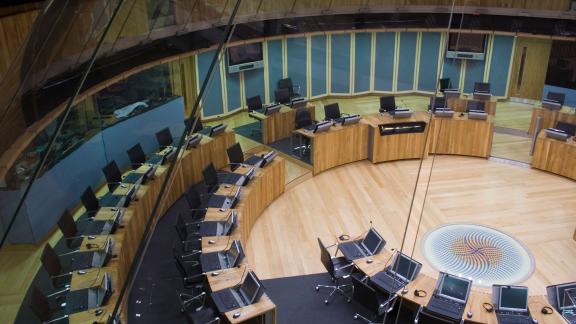To continue on positive trajectory, long-term planning and investment needed

- In March, just under 8,400 pathways were waiting more than two years, the lowest figure since April 2021, more than three quarters (88.1%) lower than the peak, and a 45.9% decrease from the previous month (when the figure was 15,500).
- In March, the number waiting longer than eight weeks for diagnostic services (the target maximum wait) decreased to just over 35,200, the lowest figure since March 2020.
- In March, the number waiting longer than fourteen weeks for therapies (the target maximum wait) decreased to just over 4,000. In the same month last year, this was 13,900.
- For cancer services, performance improved against the 62 day target in March, increasing to 63.5%, the highest figure since the current data collection began in March 2022.
- April saw similar levels of demand on urgent and emergency care services to March, with performance remaining stable.
- April saw 1,404 Pathways of Care Delays, defined as the number of adults occupying an NHS hospital bed, who were 'clinically optimised' ready to return home or move on to the next stage of care, that experienced a delay in their transfer of more than 48 hours beyond the point they were clinically optimised.
Responding to the latest NHS performance and activity statistics, director of the Welsh NHS Confederation Darren Hughes said:
“The latest performance and activity figures for March and April show meaningful improvement in many areas, with a real focus on bringing down the longest waits.
“The fact that the longest waits for treatment are at their lowest in four years, with a 45% decrease in just one month, is testament to the determination and willingness of NHS leaders and their staff to find new ways tackle the ever-rising challenges in front of them.
“However, to meet the First Minister’s pledge to cut two year waits to 8,000 by spring, health boards have had to increase spending on evening and weekend working and increase their use of the private sector, at the same time as being told they must continue to find efficiencies and bring down their deficits to guarantee future funding pots.
“This short-term, end-of-year funding, while welcomed, would be more beneficial invested into services to make sustainable long-term improvements, which would not only improve services for patients, but help make efficiencies in running costs.
“NHS leaders are under no illusions that there is still a long way to go until we achieve sustainable health and care services, with acceptable waits and optimal outcomes for all patients. But it is important to take the opportunity to consider how far we’ve come, to learn and reflect on what has had the biggest impact and how this is embedded more broadly in long-term strategies – for example, the pooling of resources through increased regional working.
“Critical to the long-term improvement of health and care in Wales, we’re calling on the next Welsh Government to deliver a cross-government national strategy to improve health and wellbeing and reduce inequalities, invest in a long-term plan for the NHS and social care workforce and launch a long-term capital and infrastructure strategy. This will help to provide the stability needed to deliver what all health and social care staff want to deliver for patients.”

